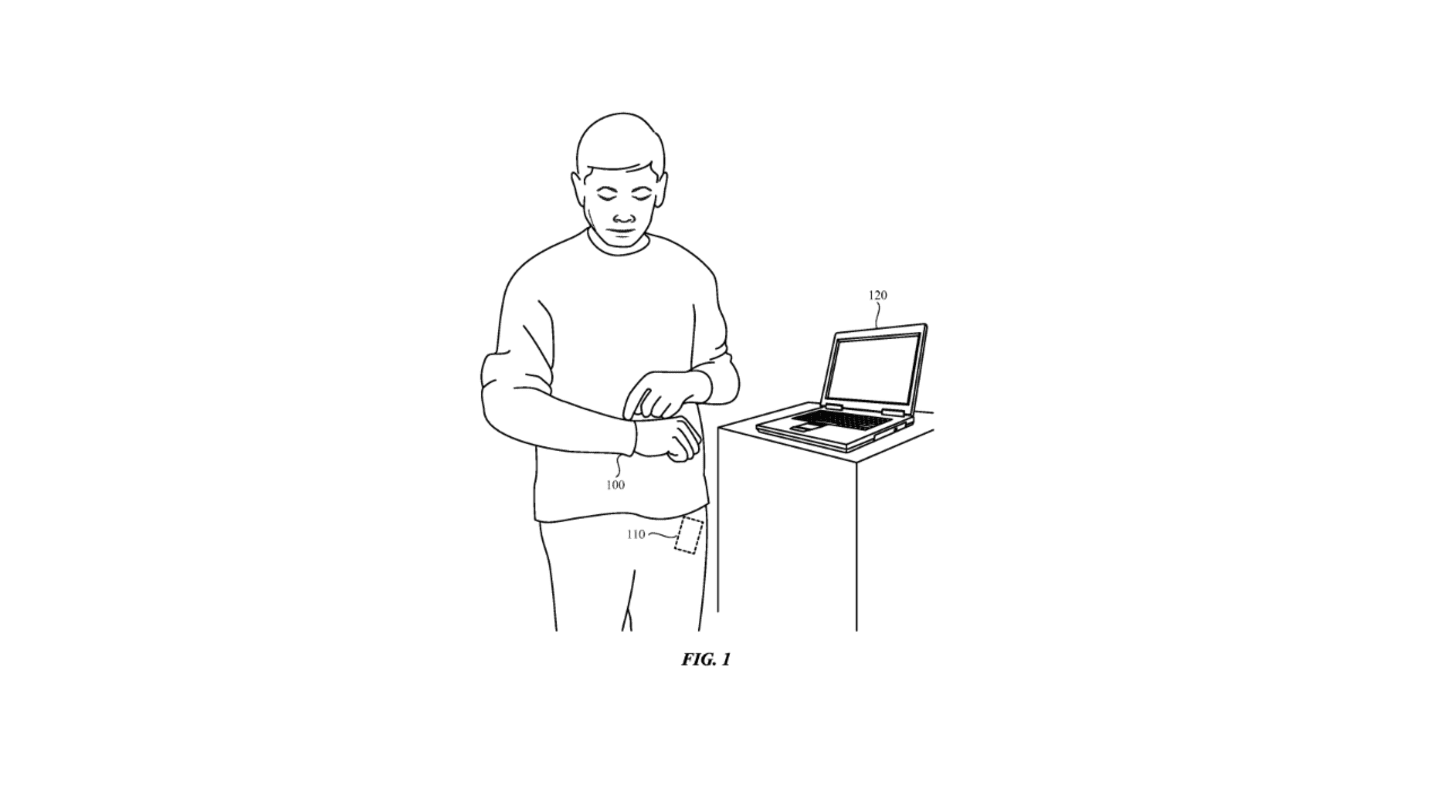
On 28 September US tech giant Apple filed a patent for a touch-sensitive smart textile containing conductive threads that is “configured to detect the occurrence of a touch, the location of a touch, and/or the force of a touch”.
Apple said the smart touch-sensitive textile may be incorporated into articles of clothing or any textile-based garment, as well as wearable electronic devices.
The conductive threads, they say, can be made from a variety of yarns, including copper yarn, silver yarn, or coated nonconductive natural or synthetic fibres.
The patent application features an illustration of a man using his shirt to operate an electronic device.
This is not Apple’s first venture into futuristic textiles. In 2022, the company filed a patent for a “fabric control device” which enables technology and sensors to be embedded into fabric, having previously been granted patents for Smart Apple Watch woven bands and buttons.
The company’s persistent interest in smart fabrics suggests it is exploring the addition of controls to a wide variety of consumer items, including clothing.
Smart clothing is yet to gain traction amongst apparel heavyweights
Despite digital and smart clothing being popular buzzwords they have yet to gain traction in the wider apparel industry.
US denim company Levi Strauss & Co. collaborated with tech giant Google on the Jacquard “smart jacket” in 2020, for example, however it largely fell flat, with Google shutting down its smart fabric app last April.
US sportswear company Under Armour has also dabbled in the embedded tech market with biometric running trainers, however the company’s corresponding app looks set to disappear off the map in 2025.
In a report on wearable tech in apparel, business analyst company GlobalData attributed the slow growth to “lack of technological maturity”, “improper marketing positioning” and “lack of awareness among consumers”.
The growth of the tech wearables market, however, may well spur a resurgence of interest across the apparel industry.
Sleek wearable fitness monitor WHOOP burst onto the scene back in 2012, and has since gone on to disrupt a category which was meant to be the new frontier for the likes of US sports brand Nike and Under Armour.
Valued at $3.6bn in 2021, the company has since gone on to bring out a line of fitness apparel, including boxers, bralettes, leggings and performance tops, that can monitor biometrics such as heart rate, blood oxygen, skin temperature, and more.
Google has also revealed an interest in apparel-integrated tech, filing for a patent in April 2023 for a smart footwear system. The footwear uses sensors and machine-learned exercise identification models to identify a wide range of exercise movements, including upper-body exercises such as bench-press or barbell curl.
Our signals coverage is powered by GlobalData’s Thematic Engine, which tags millions of data items across six alternative datasets — patents, jobs, deals, company filings, social media mentions and news — to themes, sectors and companies. These signals enhance our predictive capabilities, helping us to identify the most disruptive threats across each of the sectors we cover and the companies best placed to succeed.


